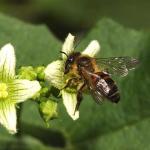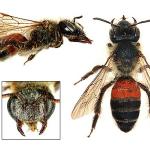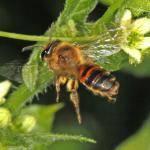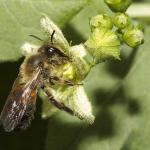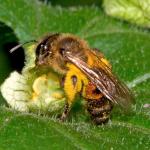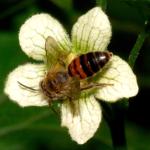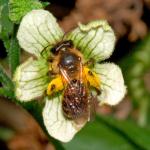Andrena rubricata Smith, 1847.
This species is one of the very few bees that, in Britain, visits only a single flower species for pollen, though it will fly to unrelated species for nectar.
Confined to southern England, where it is known from the Isle of Wight, Hampshire, East Sussex, West Sussex, Surrey, Middlesex, Kent and Essex. There is a number of old unsubstantiated records of this species from Cornwall, Devon, and Suffolk. It is possible that some of these refer to Andrena rosae Panzer, which superficially resembles A. florea. White bryony, the sole pollen source in Britain, is very rare in Devon and Cornwall where it is a probable introduction (Perring & Walters, 1962).
Found throughout much of Europe, from Denmark and The Netherlands, south to Spain and east to Russia. It also occurs in north Africa.
Listed as Rare (RDB3) in Shirt (1987) and by Falk (1991).
Most sites for the species are on sandy soils, including the edges of heathland, parkland, open clearings and the margins of woodland, and roadside verges.
Univoltine; late May to early July. There is an exceptional record from north Hampshire of two females nesting in early August (G R Else and A Davidson, pers. obs.).
This is a typical mining bee, the nest burrows being excavated in the soil. Both single nest burrows and large aggregations of burrows have been encountered on heathland and along paths through woodland. The nest architecture is unknown.
Specimens of this bee have also been collected from bramble (Rubus spp.) flowers in Hampshire (I.R. Hudson, pers. comm.), which were being visited, presumably, only for nectar. Males regularly visit white bryony for nectar. On the Continent (and perhaps also in Britain) the bee visits raspberry (Rubus idaeus), hawthorn (Crataegus spp.), dropwort (Oenanthe spp.), viper's-bugloss (Echium vulgare) and hawkweed (Hieraceum spp.) for nectar. In southern Spain, both sexes have been found nectaring on squirting cucumber (Ecballium elaterium) - another species in the family Cucurbitaceae
No information available.
2018


